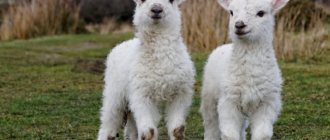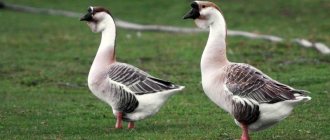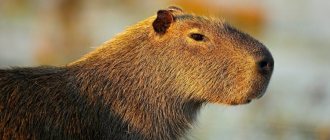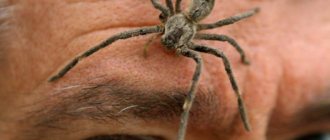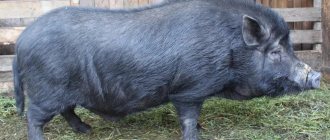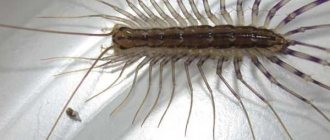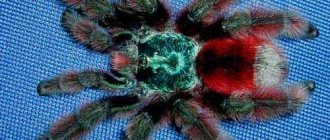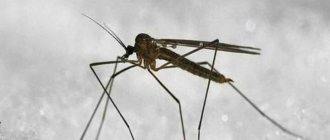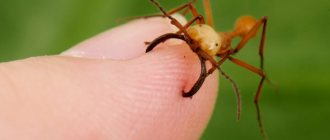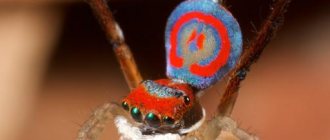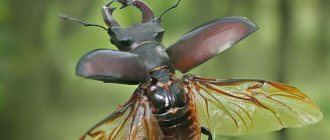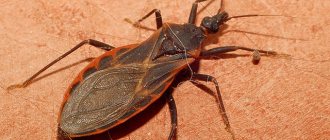Our planet is inhabited by numerous animals living on land, in water, in the air and underground. Their world is rich and diverse and each of the creatures occupies its own specific niche. All of them are different from each other and differ not only in their lifestyle, but also in their incredible size. And if large creatures are always in sight, then small ones are not so easy to meet, although there are quite a lot of them.
flickr/Markus Fleute
Researchers from many countries travel around the world in search of new species of miniature creatures, but finding them is not so easy, so quite often scientists fail. But when they manage to discover a new creature hitherto unknown to anyone, their joy has no end. Recently, researchers have discovered many new species of baby animals.
The smallest bird
The smallest bird on Earth, the bee hummingbird, lives on the island of Cuba. The male, whose length is no more than 5 cm, including beak and tail, weighs less than 2 g (the same as 2 kopecks of the Soviet model), and the female is slightly larger. As sometimes happens in nature, she is traditionally painted in faded tones and desperately hardworking, and he is defiantly bright, narcissistic and selfish.
Males do not build nests, do not hatch chicks, moreover, they do not feed or help in this extremely complex process. Due to their high metabolism, hummingbirds are forced to feed themselves for most of the day - they need to visit up to 1,500 flowers, collecting nectar from them.
With such a metabolism, a person weighing 50 kg would have to drink about 400 liters of sweet water per day.
The female needs to eat herself and also feed the chicks. Using its long beak, it pushes food directly into the newborn’s stomach. It is believed that the interval between feeding chicks cannot exceed 8 minutes. Otherwise, they weaken or do not survive at all. Surprisingly, hummingbirds nurse almost all of their young.
The heart of these gentle creatures beats 300 beats per minute in a calm state, and up to 500 in flight. To maintain such an active lifestyle, they fall into torpor at night. Body temperature drops from 43 to 14–20 °C. And with the sunrise, the hummingbirds “come to life.” These birds are listed in the Red Book as a species close to extinction.
Classification: scientific name - Mellisuga helenae, class - birds, order - hummingbirds, family - hummingbirds, genus - hummingbird-bee, species - hummingbird-bee.
Dwarf gecko
The dwarf gecko (lat. Sphaerodactylus ariasae) is a small creature, the size of which does not exceed 1.6-1.8 cm, and easily fits on the thumbnail. This little thing weighs nothing - 0.2 grams.
flickr/Hispanioland
It is worth noting that this gecko was discovered in 2001, but despite this it is already in danger of complete extinction. It is probably worth thanking those researchers who timely calculated its number, in view of which the dwarf gecko was immediately listed in the Red Book.
Smallest mammal
The pygmy shrew is one of the smallest mammals (its rival is the hog-nosed bat). It measures 5–7 cm in size, including the tail, which can reach half the total body length. It weighs (with a stretch), if you follow the analogy with Soviet coins, like the same 2 kopecks. (2 g).
This baby is a predator and “suffers” from a brutal appetite: it usually eats food twice its own body weight. Its diet is dominated by insects, larvae, woodlice, and earthworms.
When she moves, her heart simply jumps out of her chest: her heart rate reaches 1500 beats per minute.
The shrew prefers to live in grassy fields, provided it is humid. Its habitat is southern Europe, coastal regions of Arabia and North Africa, Central Asia, India, the Philippines, and Japan. Reproduction has not been studied.
Classification scientific name - Suncus etruscus (has several more names: Etruscan shrew, dwarf shrew, little shrew), class - mammals, order - shrews, family - shrews, genus - shrews, species - dwarf shrews.
Almost the smallest mammal
Hog-nosed bat is how Thai biologist Kitty Thonglongya dubbed this little animal, which he discovered 40 years ago. It seemed to the scientist that the mouse’s small pink proboscis looked like a pig’s snout.
Its weight does not exceed 2 g, its length is from 2.5 to 3.5 cm, its wingspan is from 13 to 15 cm. It really competes with the polytoothed shrew, whose body length without tail is about 3 cm, and the weight is the same .
The mouse is long-eared and big-headed: the size of the skull is 1/3 of the body length. It feeds mainly on dipteran insects, sometimes hymenoptera and spiders.
This Thumbelina appetizingly “picks” food directly from the leaf, since the structure of its wings allows it to hover in one place for a long time.
Mice live in Thailand, in the depths of small caves located in the limestone hills. At dusk they fly out to hunt in a nimble company of four or five little ones. They are listed in the Red Book as an endangered species: their number is estimated at approximately 500 individuals.
Classification: scientific name - Craseonycteris thonglongyai, class - mammals, order - chiroptera, family - pig-nosed bat, genus - Craseonycteris, species - pig-nosed bat.
Pygmy shrew
The smallest mammal. The pygmy shrew, or Etruscan shrew (lat. Suncus etruscus) is an inhabitant of southern Europe, southern Asia and northern Africa.
flickr/trebol_a
Many scientists believe that for an animal to exist normally, it must weigh at least 2.5 g, but this little one, whose weight is only 1.5 g and whose body length is 3-4.5 cm, lives and thrives well. But to do this, she has to eat all the time, and therefore she hardly sleeps. The heart rate of the pygmy shrew is 1300 beats per minute.
The smallest reptile
If one of the largest Galapagos tortoises weighs about 200 kg, then the weight of the smallest, Namaqualand, or Cape speckled, ranges from 95 to 165 g with a body length of 6–10 cm. Females are usually larger than males.
During the mating season, males behave aggressively not only towards rivals, but also towards the chosen “lady”.
During the fight, they try to turn each other over by biting and striking with the leading edge of their shell.
The female, having surrendered to the mercy of the winner, after some time lays one tiny egg in the hole. After four to five months, a newborn is born. It weighs 5–8 g (for comparison: a quail egg weighs 10–12 g).
Turtles live in South African areas, mainly in dry forests and scrub savannas. Listed in the Red Book as a species close to extinction (the tribes of South Africa used them for medicinal purposes).
Classification: scientific name - Homopus signatus, class - reptiles, order - turtles, family - land turtles, genus - flat-bodied turtles, species - Homopus signatus.
Hog-nosed bat
The pig-nosed bat, or bumblebee mouse (lat. Craseonycteris thonglongyai) - lives in the west of Thailand and the southeast of Burma.
flickr/Daniel Hargreaves
Its weight is only 2 g, and its body length is no more than 4 cm. According to the latest data, their number is several hundred individuals, therefore it is a vulnerable species listed in the Red Book. In flight it resembles a hummingbird.
The smallest lizard
Of all the lizards, perhaps the most popular are geckos. There are no aggressive or predatory reptiles among them, but pretty faces with an unusual appearance predominate.
According to American herpetologist Clifford Pope, they are so attractive that they can compete with turtles as exotic pets. In addition, geckos are most often small in size.
And in 1964, 15 cute Lilliputians were found in the British Virgin Islands (an archipelago in the Caribbean).
The Virginia round-toed gecko has a body length of 36 mm, half of which is in the tail. Its weight is 0.15 g, which is comparable to one pumpkin seed.
Due to their small size, geckos lose moisture twice as fast as their larger counterparts.
Therefore, they prefer to live in damp places, most often in crevices between stones, where they can crawl out during the day to bask in the sun.
Classification: scientific name - Sphaerodactylus parthenopion, class - reptiles, order - squamate, family - gecko, genus - round-toed gecko, species - Virginia round-toed gecko.
Hummingbird
Mellisuga helenae is a hummingbird in the family Trochilidae, which includes 340 species. All these birds are small, which is why they are called hummingbirds. But the tiniest one currently recorded is Mellisusuga helenae or Helen's hummingbird, commonly called the bee hummingbird. This is the smallest of all birds on the planet. An adult male weighs a maximum of 1.9 g and is 5 to 6 cm long. Its diet consists mainly of flower nectar and small insects. It lives mainly in Cuba, but these beautiful hummingbirds can be seen in the Bahamas. The number of individuals is clearly decreasing.
The smallest amphibian
The smallest vertebrate known from the class of amphibians is the frog Paedophryne amauensis. In 2009, it was discovered by American scientists among fallen leaves in a tropical forest in Papua New Guinea. The length of a miniature frog does not exceed 8 mm.
According to scientists, the frog has yet to be thoroughly studied. But the researchers have already come to an interesting conclusion. Studying the genetic data of miniature frogs of different species, they concluded that during evolution the animals decreased in size by 11 times.
The peculiarity of this baby is that the sounds it makes are not like croaking, but like the chirping of insects.
Classification: scientific name - Paedophryne amauensis, class - amphibians, order - anurans, family - narrowmouths, genus - Paedophryne, species - Paedophryne amauensis.
Irukandji jellyfish
The Irukandji jellyfish (lat. Carukia barnesi) is an unusually poisonous and very small creature that lives in the Pacific Ocean, off the coast of Australia. Externally, this jellyfish resembles a white translucent bell. Its dimensions are only 12x25 mm, and the tentacles are from 1 mm to 1 m long.
But it was not only its size that attracted the attention of researchers. This little thing can not only paralyze a person, but even kill him. There is no antidote yet, since this species has not yet been studied enough and, therefore, its poison too.
The smallest fish
The Guinness Book of Records names two of the smallest fish at once: one from the carp family, Paedocypris progenetica, lives in the peat bogs of Indonesia, and the other, the Panamanian photocorynus Photocorynus spiniceps, lives at a depth below 1000 m in the tropical and subtropical waters of the Atlantic and Pacific Oceans. Both species are found in places where sunlight does not penetrate.
The length of an adult specimen from Indonesia ranges from 7.9 to 10.3 mm. Nature has endowed males with attractive spots between the eyes and on the top of the head.
Until the beginning of the 21st century, scientists did not study peat bogs, believing that life simply could not exist where the water was very acidic. Nature has presented another surprise - and there is life there.
In 2006, the fish was described and entered into the scientific register. An unusual fact - it belongs to the carp family.
Djungarian hamster (Phodopus sungorus)
Size: body 80mm, tail up to 11mm Weight: 20-65 g Habitat: Khakassia, Western Siberia Food: cereals
The small and fluffy Djungarian hamster adapts perfectly to home conditions. His luxurious fur can be classic brown, light gray and even red. In captivity they live up to 2 years and are ready to breed all year round. In its natural habitat, a light stripe appears on the hamster's back from the top of its head to the tip of its tail.
5
Rating of the smallest animals
Our planet is inhabited by numerous animals living on land, in water, in the air and underground. Their world is rich and diverse and each of the creatures occupies its own specific niche. All of them are different from each other and differ not only in their lifestyle, but also in their incredible size. And if large creatures are always in sight, then small ones are not so easy to meet, although there are quite a lot of them.
Researchers from many countries travel around the world in search of new species of miniature creatures, but finding them is not so easy, so quite often scientists fail. But when they manage to discover a new creature hitherto unknown to anyone, their joy has no end. Recently, researchers have discovered many new species of baby animals.
Microfrogs Paedophryne
The smallest land animal. Microfrogs (lat. Paedophryne) - this small frog belongs to the family of narrow-mouthed frogs, or microfrogs.
It is considered the smallest in the world, its length does not exceed 7.7 mm, but sometimes it grows up to 11.3 mm. This little one was recently discovered, it was found in Papua New Guinea. The females of these amphibians are slightly larger than the males. Thanks to its brown color, this frog is invisible neither on the ground, nor among the foliage, nor on tree trunks.
Fish Paedocypris progenetica
The smallest aquatic animal. The fish Paedocypris progenetica is recognized as the smallest inhabitant of water bodies. It can be found in sewage streams and peat swamps in Indonesia.
The largest are the females of these fish, but they are also small - 10.3 mm in length. The smallest officially recorded length of this fish is 7.9 mm. Interestingly, these little ones belong to one of the large carp families!
Chameleon Brookesia minor
The smallest lizard in the world. Brookesia minima chameleon (lat. Brookesia minima) is an inhabitant of the tropical forests of Madagascar and the smallest lizard.
Due to its tiny size (1.2 cm) and the ability to change color (in fact, like all chameleons), it is not easy to notice in natural conditions. It was discovered in 2007 near the island of Madagascar, and this chameleon was described only in 2012.
Denis's seahorse
Denis's seahorse (lat. Hippocampus denise) is another little one and a master of camouflage. It lives in the warm waters of the western Pacific Ocean at a depth of about 16-90 m.
One can only wonder how such a tiny creature, whose length does not exceed 1 cm, manages to survive among the cruel world of marine life. But it turns out that it is possible to survive: it perfectly camouflages itself as gorgonians or the corals in which they live, painting its body orange or yellow.
Dwarf gecko
The dwarf gecko (lat. Sphaerodactylus ariasae) is a small creature, the size of which does not exceed 1.6-1.8 cm, and easily fits on the thumbnail. This little thing weighs nothing - 0.2 grams.
It is worth noting that this gecko was discovered in 2001, but despite this it is already in danger of complete extinction. It is probably worth thanking those researchers who timely calculated its number, in view of which the dwarf gecko was immediately listed in the Red Book.
Irukandji jellyfish
The Irukandji jellyfish (lat. Carukia barnesi) is an unusually poisonous and very small creature that lives in the Pacific Ocean, off the coast of Australia. Externally, this jellyfish resembles a white translucent bell. Its dimensions are only 12x25 mm, and the tentacles are from 1 mm to 1 m long.
But it was not only its size that attracted the attention of researchers. This little thing can not only paralyze a person, but even kill him. There is no antidote yet, since this species has not yet been studied enough and, therefore, its poison too.
hummingbird bee
The smallest bird. The bee hummingbird (lat. Mellisuga helenae) is the smallest among birds.
It was discovered in 1844 in Cuba by Juan Cristobal. Its weight is only 1.6-2 g, and its body length is 5-7 cm. It feeds, like all hummingbirds, on the nectar of flowers. Interestingly, the heart of this miniature bird beats at a frequency of 300-500 beats per minute.
Pygmy shrew
The smallest mammal. The pygmy shrew, or Etruscan shrew (lat. Suncus etruscus) is an inhabitant of southern Europe, southern Asia and northern Africa.
Many scientists believe that for an animal to exist normally, it must weigh at least 2.5 g, but this little one, whose weight is only 1.5 g and whose body length is 3-4.5 cm, lives and thrives well. But to do this, she has to eat all the time, and therefore she hardly sleeps. The heart rate of the pygmy shrew is 1300 beats per minute.
Hog-nosed bat
The pig-nosed bat, or bumblebee mouse (lat. Craseonycteris thonglongyai) - lives in the west of Thailand and the southeast of Burma.
Its weight is only 2 g, and its body length is no more than 4 cm. According to the latest data, their number is several hundred individuals, therefore it is a vulnerable species listed in the Red Book. In flight it resembles a hummingbird.
Snake Tetracheilostoma carlae
The snake Tetracheilostoma carlae is the shortest snake found in the Caribbean.
This baby grows to only 100-104 mm in length and can easily be confused with an earthworm. Likes to hide under stones and also in the soil. It feeds on termites, ant eggs and other small insects. Not poisonous.
In order to survive, many creatures during evolution have to take on the most bizarre shapes and unusual sizes. The most striking proof that nature has prepared many surprises for us are the miniature animals of our planet.
Source: https://www.ZooPicture.ru/samye-malenkie/
Chameleon Brookesia minor
The smallest lizard in the world. Brookesia minima chameleon (lat. Brookesia minima) is an inhabitant of the tropical forests of Madagascar and the smallest lizard.
flickr/Kurt Bleys
Due to its tiny size (1.2 cm) and the ability to change color (in fact, like all chameleons), it is not easy to notice in natural conditions. It was discovered in 2007 near the island of Madagascar, and this chameleon was described only in 2012.
The smallest mammal on earth - photo
The animal world is amazing and diverse. There is room on our planet for both the blue whale, weighing 200 tons, and the tiny shrew, weighing 1.2 grams. By the way, it is she who is recognized as the smallest mammal on Earth.
The miniature shrew or, as it is called, the dwarf shrew, is similar in body structure to an ordinary mouse. Only the elongated muzzle resembles a proboscis.
The length of the body including the tail of the rodent does not exceed 6 cm.
The little shrew is found in countries with warm tropical climates. Malta, Greece, China, Sri Lanka, France are the favorite habitats of the mammal.
It can often be found in coastal areas, fields and vegetable gardens.
The animal is nocturnal and absorbs huge amounts of food: several times its own weight.
The pygmy shrew feeds on insect larvae, worms and lizards.
The smallest mammal is at risk of extinction due to the changing climate to which they are sensitive. Also, the reduction in the population of shrews is facilitated by agricultural work, during which the rodents’ homes are destroyed.
Source: https://theecology.ru/zhivotnyie/samoe-malenkoe-mlekopitayushhee-na-zemle
Guinea pig
This small animal can have long colored fur, which makes it even more attractive. The guinea pig has an affectionate, sociable and good-natured disposition. The vulnerable and timid little animal eats hay and vegetables.
He rarely bites and needs a calm environment. Therefore, it is advisable to protect him from stress. This small rodent is not able to live alone and feels comfortable in the company of its relatives.
Recommended Articles
- Which rodents are suitable for keeping at home
Decorative rodents are tiny, cute animals with a good-natured character and funny habits. They don't take... - What rodents are there: top 14 steppe and field animals Rodents make up 42% of the total number of all mammals. Wild animals are widespread throughout the earth...
Small rodent - guinea pig
The smallest mammals (+Photo)
The world's smallest mammals may seem fragile and defenseless, but their tiny size gives them much more than just a cute look.
It is thanks to their small stature that such animals manage to make their way through thin tree branches and catch insects, as well as hide from predators even in small recesses.
American shrew mole (Neurotrichus gibbsii)
Neurotrichus gibbsii
Photo: Vidkriti Dzherela
- Average weight: 10g
- Length: 69-84 mm, and with a tail – another 31-42 mm
- Distribution: Canada, USA
It inhabits damp places where there is soft earth. These animals mainly eat earthworms, insects, snails and slugs, but their diet also includes lichens, fungi and plants.
The American shrew mole is an excellent swimmer and can climb bushes. It lives in a small group and is capable of both diurnal and nocturnal activity.
The smallest mammal in the world
Scientists believed that a mammal weighing less than 2.5 grams could not exist on the planet, because its body would not have the conditions for normal metabolism. However, back in the 19th century, from the words of the peasants of Sardinia, Italian zoologists recorded that a shrew weighing 1.2 grams lives on the island.
In our time, the German naturalist A. Gerets spent several years searching for the Lilliputian mouse. And she was lucky...
... a shrew 5.7 cm long, including its tail, fell into the trap. The animal turned out to be very interesting - it sleeps only two hours a day, absorbs almost three times (and according to some sources 6 times) more food than it weighs.
The tiny animal is also called the “dwarf shrew” or “Etruscan shrew” - it is the smallest mammal in the world. The body length of the shrew rarely exceeds three centimeters.
The Etruscan shrew moves very quickly and must catch prey every two hours - otherwise it will die of exhaustion. The shrew's main food is insects and other invertebrates (beetles, spiders, grasshoppers.), although it can cope with larger prey - frogs, lizards, etc.
The polytooth resembles a mole in appearance, from which it differs in the presence of a proboscis. It can dig minks and often lives along the edges of fields, vegetable gardens, on the banks of reservoirs in Southern Europe, Africa and Southeast Asia.
The metabolic rate of the shrew is characterized not only by the need for a huge amount of food, but also by the work of its cardiovascular system.
As a rule, the shrew's heartbeat reaches 1511 beats/min (25 beats/sec), and its body temperature is 37 C°. However, when the shrew falls into a temporary stupor, called torpor, its temperature drops to 12 C°.
Typically, this state of the body occurs during food shortages and with the onset of cold weather. Coming out of torpor is accompanied by a sharp increase in heart rate - from 100 to 800-1200 per minute.
These days, these exceptional creatures are endangered in some countries. This is largely due to sudden changes in climate, to which pygmy shrews are very sensitive.
But to a greater extent, the destruction of their homes as a result of agricultural work leads to a decrease in the number of Etruscan shrews.
This fact is even more upsetting when you consider that the shrew brings great benefits to people by destroying insect pests in their gardens, orchards and fields.
Source: https://masterok.livejournal.com/2324417.html
Squirrel
The common squirrel, or wecksha, is a small rodent 20-28 cm long and weighing up to 250 g. The main distinguishing features of this small animal are fluffy ear tufts, shiny dark eyes and a luxurious tail.
In winter, the squirrel “dresses up” in a rich, soft coat, and with the onset of warmth, the small rodent changes its outfit to short, harsh fur.
This nimble little animal easily makes contact and quickly gets used to people. To prevent a small rodent from getting bored in captivity, it needs a spacious house and proper care.
Squirrel is a small rodent
The smallest mammals on earth
When we meet a tiny dog, a chick, or a hamster, we experience a feeling of tenderness, a desire to warm us with our love and protect the baby.
In nature there are inhabitants whose size can cause not only tenderness, but also surprise - is this possible? The small size of these animals perfectly allows them to hide from hunters for profit, hide in a narrow crack, crawl into a narrow passage for food , and under their light weight even a fragile thin twig will not break.
What are they? Where do they live? We will learn about the smallest mammals in the world, the inhabitants of the planet, among which there are such little ones that are slightly larger than a bumblebee.
dwarf cuscus lives in New Guinea, Indonesia, and Australia ; it is very similar to a smaller copy of a chinchilla and weighs about forty-five grams in total, and ranges in size from five to ten centimeters. An individual of couscous was officially described, weighing 12 grams!
They are active at night and are insectivores. The cuscus spends most of its time in a suspended state - it clings to a branch with the tip of its tail and can sleep or look out for prey. For the winter, it curls up into a ball and sleeps until warm days.
Among bats there are also record holders - the pig-nosed mouse , Craseonycteris thonglongyai, weighing two grams and length from two and a half to three and a half centimeters. It got its specific name because of its proboscis nose, which is very similar to a pig’s snout. These inhabitants of Myanmar and Thailand live in caves and are listed in the International Red Book as an endangered species.
Living in the northwestern United States, Canada and Colombia, the American earth-moving mole (Neurotrichus gibsii) weighs 10 grams, is about 6 cm long, and has a tail of 2.5 cm. It has sharp claws and a long proboscis. He is not constantly underground, compared to other moles, he is less often underground, and often hunts in bushes, on the surface of the earth.
What to feed the babies?
In the wild, these animals are unpretentious in food and feed on what surrounds them: grains, insects, grass - in the summer there is plenty of food for them. In winter, mice do not hibernate, so they need to think in advance about what they will eat during this difficult period and prepare seeds in advance that will help them cope with adverse weather conditions.
At home, the mouse needs to be provided with food by its owners, and in order for your pet to live to the age of three and die in old age, you need to take good care of it. Proper balanced nutrition for rodents is very important. So, what to feed baby mice?
- The basis of the diet of these rodents are cereals and cereals.
- It is useful to add small pieces of carrots and seasonal fruits to the main dish.
- Fresh greens must be present in the diet of babies every day.
- It is worth remembering that in the wild these mice also feed on insects, so this part of the diet also needs to be thought about. You need to add worms and grasshoppers to the food; you can even feed the rodent some raw minced meat.
- From time to time it is advisable to feed the mouse cottage cheese and white bread soaked in milk.
- Another very important rule is that the water in the drinking bowl must be changed daily.
If you think about it, baby mice don’t require that much attention and care, but if you follow all the above recommendations, then your pet will be healthy, active and beautiful, and it is in this state that he will be able to best thank you for your love, given by you.
Five of the smallest mammals on the planet
The smallest mammals on our planet may seem touching and defenseless, but thanks to their tiny size, they have another distinctive feature, in addition to their endearing appearance. As strange as it may sound, such tiny sizes work to the advantage of their owners.
Moreover, this applies to all aspects of the life of representatives of small mammals: they have this advantage even when these cute little ones crawl to the tips of the thinnest branches, hunting for insects; and then when they find the smallest crevices in which they can easily hide from the predators hunting them.
What kind of mammals are we talking about exactly? About those whose size is no larger than, say, a large bumblebee!
So what are the smallest mammals on Earth?
The popular American Internet magazine Life's Little Mysteries
told us about the five tiniest representatives of the animal world in the class of mammals. So, in descending order (of size, of course)…
Dwarf couscous
Dwarf couscous
(international scientific name -
Burramyidae
) is the largest among the smallest animals in this five Lilliputians, so we’ll start with it.
Despite the fact that this funny creature looks more like the well-known chinchilla than a kangaroo, the dwarf cuscus is a member of the family of marsupial mammals
, and, therefore, is a relative of the kangaroo, koala, the notorious marsupial Tasmanian devil and the funny herbivore wombat, which looks like small bear cub.
The dimensions of dwarf couscous range from five to 10 centimeters, and it weighs only no more than 45 grams. There are individuals whose weight is just over 10 grams!
Thus, the dwarf cuscus is significantly smaller than all its relatives - marsupial mammals. As they say, every family has its black sheep...
Like its much larger possum cousins, the pygmy cuscus is primarily nocturnal. And just like them, the couscous uses its tail to hang upside down, clinging to a branch.
Dwarf couscous lives mostly in Australia, Papua New Guinea and Indonesia.
In winter, the couscous curls up into a tight ball, covers its eyes with its ears and falls into torpor, or, simply put, goes into hibernation.
In this way, he regulates the metabolism of his small body and its temperature, escaping the winter cold.
American shrew mole
American shrew mole
(international scientific name -
Neurotrichus gibbsii
) with its 10 grams of weight (that's like two 5-cent coins!) is just over 6 centimeters long, and its tail sticks out two and a half centimeters. This mammal lives in moist forests in the northwestern United States and southeastern British Columbia, Canada.
Like other, larger moles, the American shrew mole has a long proboscis ending in a flattened tip and knife-sharp claws, allowing it to use its tiny paws to dig holes and search for food.
Unlike its relatives - large moles, which, as is known, spend most of their lives underground, digging endlessly long tunnels and underground passages, the American shrew mole usually hunts on the surface of the earth.
In addition, he often climbs tall bushes in search of food, which turns out to be small insects.
Three-toed jerboa
Three-toed jerboa
(international scientific name -
Salpingotulus michaelis
) is an unimaginable creature that simply amazes with its touching appearance and its irrepressible energy for such a small body.
In recent years, the three-toed jerboa has become an Internet star. Videos showing these funny mammals regularly appear on the Internet. It is the smallest rodent on the planet
, weighing only 3 grams. The average length of the three-toed jerboa is about 5 centimeters. The tail of this creature is many times longer than the body itself and can reach... twenty-five centimeters!
The three-toed jerboa is native to Afghanistan and Pakistan, but 25 species of this tiny animal can be found throughout Central Asia and China.
Interesting fact: one of the relatives of the three-toed jerboa is the long-eared jerboa (Allactaga euphratica)
so popular and beloved in Afghanistan that the government of that country issued a postage stamp in 1989 dedicating it to this rodent.
Pygmy shrew
Another little one from our list, the pygmy shrew
(international scientific name -
Suncus etruscus
) small in size, but many names!
It is also called the little shrew, the little shrew and, finally, the Etruscan shrew
.
It can rightfully be considered one of the tiniest mammals on the planet, since this creature weighs two grams at most! If we continue to draw analogies with coins, then the weight of a pygmy shrew is less than an American dime
!
Adult shrews are no more than five centimeters in length. Add here the tail, the length of which is about a third of the length of the body - and here you have a portrait of a real baby shrew, the total length of which with the tail is no more than 6 centimeters!
The tiny Etruscan shrew has a voracious appetite and usually eats twice its body weight in food
! The surprises didn't end there. This creature has a surprisingly high heart rate - almost 25 beats per second, or 1500 per minute.
For example, the average number of contractions of the human heart is 72 beats per minute. The pygmy shrew prefers to live in grassy fields, provided that there is sufficiently high humidity. Therefore, the habitat of the Etruscan shrew is quite wide.
: from Southern Europe to Northern Africa.
It can be found in the Middle East and the Arabian Peninsula, Central and South Asia.
Hog-nosed bat
This is truly a real record holder among the smallest mammals living on our planet! Hog-nosed bat
(international scientific name -
Craseonycteris thonglongyai
) weighs a maximum of 2 grams, and its dimensions range from 2.5 to 3.5 centimeters, that is, about an inch.
And we are talking about fairly large individuals! In 1974, this “Thumbelina” was discovered by the Thai zoologist Kitti Thonglongya,
and it was he who gave it this name because of its small pink proboscis, which really resembles a pig’s snout.
Hog-nosed bats live, as bats should, in caves. True, they prefer limestone hills in the dense forests that grow in some places in western Thailand and southeastern Myanmar.
The existence of the pig-nosed bat has been threatened
due to deforestation and constant invasions of tourists into the habitats of this animal.
International Union for Conservation of Nature
listed the pig-nosed bat as a critically endangered species on the International Red List.
Source: https://www.infoniac.ru/news/Pyaterka-samyh-malen-kih-mlekopitayushih-planety.html
Three-toed jerboa
Three-toed jerboa
(international scientific name -
Salpingotulus michaelis
) is an unimaginable creature that simply amazes with its touching appearance and its irrepressible energy for such a small body.
In recent years, the three-toed jerboa has become an Internet star. Videos showing these funny mammals regularly appear on the Internet. It is the smallest rodent on the planet
, weighing only 3 grams. The average length of the three-toed jerboa is about 5 centimeters. The tail of this creature is many times longer than the body itself and can reach... twenty-five centimeters!
The three-toed jerboa is native to Afghanistan and Pakistan, but 25 species of this tiny animal can be found throughout Central Asia and China. Interesting fact: one of the relatives of the three-toed jerboa is the long-eared jerboa (Allactaga euphratica)
so popular and beloved in Afghanistan that the government of that country issued a postage stamp in 1989 dedicating it to this rodent.
Behavior and reproduction
Some rodents are capable of constructing a wide variety of houses; These range from holes in trees and rocks, simple burrows in nests, structures made of leaves and sticks in treetops, to complex underground tunnels, and the construction of dams on rivers and streams.
Rodents can be diurnal or nocturnal, or are sometimes active for part of the day and night. Representatives of this order can be active throughout the year, but some species experience periods of rest or deep winter hibernation.
The timing and frequency of reproduction, length of gestation, and litter size vary greatly from species to species. For example, the gray rat (Rattus norvegicus) can produce up to 22 litters at a time, and the house mouse (Mus musculus) can produce up to 14 litters annually. Population sizes can remain stable or fluctuate, and some species, especially lemmings, migrate when populations become excessively large.
Mice and rats
Mice or Muridae are a huge family that includes about 400 species and several hundred genera. This includes the genus of rats. Mice are usually small, up to 10-15 centimeters in size. Rats are larger and can grow up to 50 centimeters in length.
These are nocturnal omnivores. Basically, they lead a semi-terrestrial lifestyle: they hunt on the surface and build burrows underground. Animals prefer subtropical and tropical areas, but live almost everywhere. They were brought by humans even to remote islands.
Mice have smoother and more rounded features and larger ears. Rats, on the contrary, have small ears, an elongated silhouette, and a pointed muzzle. They are larger and more aggressive than their counterparts. Mice are very timid and try to avoid unnecessary encounters; rats do not always run away and are capable of attacking the enemy.
All members of the family have calluses on their paws, which help them move along trees and other surfaces. The tails may be almost naked (most rats, grass mice, yellow-throated mice) or covered with hair (black-tailed rats).
The animals themselves are also covered with thick hair. Its color is usually monochromatic or with a small splash of other shades. The color of the animals is predominantly grayish, black, brown or brown. Field mice and baby mice have reddish or yellowish fur.
